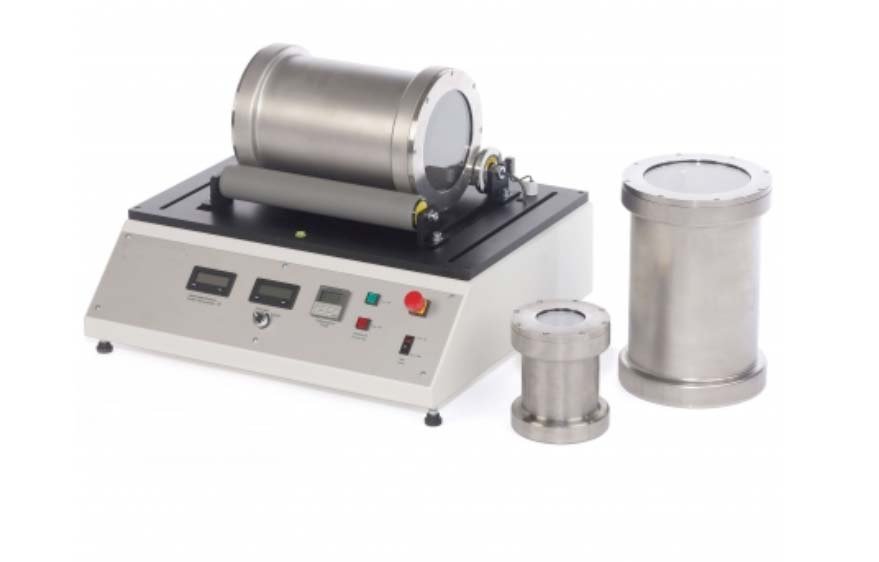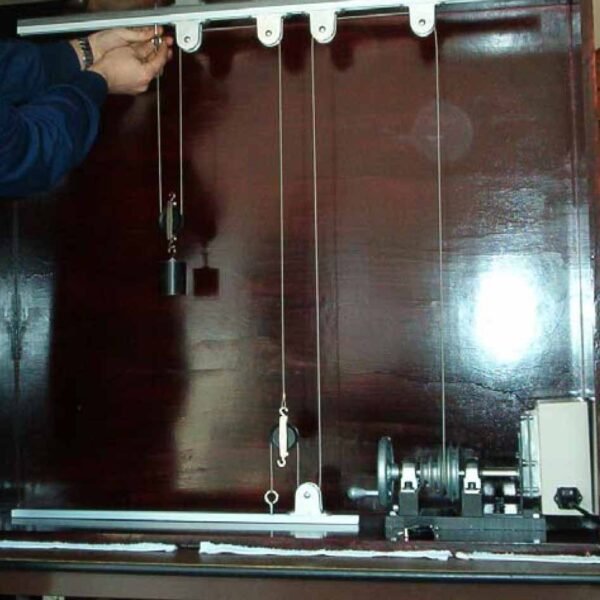Laboratory Ball Mill Model MT 122
Features
- Comminution with a ball mill
- Observation of the milling process
Ball mills are a form of mills with grinding bodies. The drums can be opened at the front and loaded with the material to be milled (limestone is recommended) and the milling balls. The drums are mounted on a drive roller and a loose roller with adjustable spacing between the axles. At low rotation speeds the comminution is effected by the balls rolling over the material (cascade motion). At higher speeds, some balls are lifted up the wall, become detached and drop down onto the material to be milled (cataract motion). Above the critical speed, centrifugal forces ensure that no more comminution takes place. These motion states can be observed through the transparent fronts of the drums.
In order to compare the theoretical power demand with the actual, the power consumption of the drive motor is indicated on a digital display. To assess the success of the comminution, an analytical Sieve Shaker is recommended.
Experiments
- Cascade and cataract motion, critical speed
- Theoretical and actual power demand
- Degree of comminution dependent on milling time, rotation speed, ball diameter, ball filling, material to be milled
- Comminution of solids with a ball mill
- 2 drums with steel jackets and transparent fronts, 1 steel drum with lifting bars
- 1 drive roller with adjustable speed, 1 loose roller
- Axle spacing of rollers adjustable to accommodate different drums
- Measurement of power consumption
- Milling time programmable by timer
- Ø 100mm/185mm
- capacity: approx. 1,15L/7,5L
- Ø 185mm
- capacity: approx. 7,5L
- Ø approx. 50mm
- Ø 5/10/15mm
- power consumption: 0…200W
- speed: 0…370min-1










